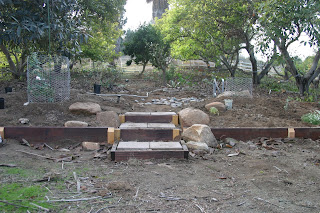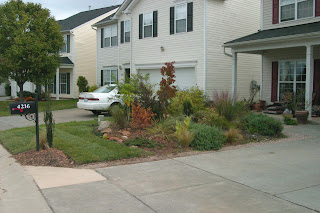Every year growing up in NC I'd look forward to October. It is mother natures time of winding down, a time to plant, a time to enjoy foliage and a great array of flowering plants giving the cool weather their last harrah. While most of the summer you look at verdant trees in a calm cooling light, the shorter days, cooler weather really brings out the excitement and fire in many deciduous tree.
Just a list of Some favourites.
Cercidiphyllum japonicum - the Katsura tree. Majestic when full grown, leaves turn yellow and smell of cotton candy right as they are about to fall...... Im not joking about the smell either!
Acer palmatum/japonicum - Japanese Maples. as a group you are hard pressed to find a larger variety for fall colours, many even reveal colourful branch structure once the leaves fall.
Cladastris kentukea - Yellow wood. Beautiful on its own in the summer with large racemes of flowers the leaves turn a bright yellow in the fall.
Acer rubrum - Red maple. Yes its common, but who doesnt like a bright beacon of red and orange leaves??? Also in early spring many produce multitudes of little red flowers.
Taxodium distichum/Metasequoia glyptostroboides/Larix sps. - The Bald Cypress, Dawn red wood and Larch are a group of deciduous conifers. All beautiful for fall colours and upright form.
Populus sps. - Aspen, cottonwood. Come alive in the fall with brilliant yellows
Cotinus obovatus/coggygria - Smoke tree and Smoke bush, mostly known for purple/chartreuse summer foliage. Fall will bring a large aray of oranges, reds all on one tree.
Rhus typhina. - Staghorn Sumac, extremely adaptable trees. Great texture and form that becomes a blaze of red in the fall followed by red berries.
Stewartia pseudocamellia - Japanese stewartia - Solid green foliage provide an excellent backdrop for white camellia like flowers in the summer and fall gives way to oranges and yellows with beautiful peeling bark.
Fagus grandifolia - American beech. This tree might not be a fan of everybodys, the leaves turn yellow in the fall and fade to a tawny bronze as they dry. They persist on the branch until the following spring gradually bleaching to a light tan. Personally the branch structure and bronze foliage looks amazing but to others it can look abit messy.
Oxydendrum arboreum - Sour wood, gorgeous tree with lily of the valley like flower stalks in the spring. In the fall the leaves turn a mix of yellow, red and purples.
Sassafras albidum - sassafras. Interesting shaped leaves that turn a mixture of yellow orange and reds. Leaves traditionally used in root beer and gumbo file.

I realize all these trees are best suited for Mid-west, Eastcoast or the Northern west..... Ive learned people here want year round greens which is a shame since there are a few trees adapted to the So Cal area that will reliably produce fall colour. Change is good.
Fraxinus sps - Ash trees. Great shade trees while there are a few that are semi evergreen, most will turn yellow in the fall.
Populus fremontii - Fremont cottonwood. Native to the Southwest, It reliably sets yellow foliage in the fall. In higher elevations even quaking aspen is possible(populus tremuloides)
Pistacia chinensis - Chinese pistache tree. Forget about any sort of edible nuts. But this tree will grace you with solid green in the summer and is one of the only reliable trees for a brilliant scarlet fall show.
Liquidambar styraciflua - sweet gum tree. East coast native that has adapted surprisingly well in So Cal. Star shaped foliage of solid green give way to a mix of reds, oranges, yellows and even purple come fall. Look for the gumball less varieties!!!
Ginkgo biloba - Ginkgo tree. Upright deciduous conifer known for its fanshaped foliage of a medium green will turn a brilliant yellow come fall. Get male clones to avoid putrid smelling fruit.
As with any plant here in California keep up with watering. Many people will notice their trees starting to turn colours early on in late summer or early fall. Alot of plants will do that as the result of heat and water stress to conserve energy and water. And when watering remember, deep thorough infrequent soakings will go alot longer ways than 5 mins every other day. And DO NOT even think about fertilizing it...... It will respond with growth but it puts more stress on your plants when in actuality you want to to get ready for a rest so it can perform better next year.
For me Autumn is a time to reflect on what I've done in the yard, re-evaluate my life and everything inbetween. I slow things down a bit to really think about what has worked, what hasnt. Dont be afraid to pull things that are not working out. Yes you bought the plant but alot of times its going to take alot more to nurse it back to health than its worth your time and effort. Just think of it as an excuse to go out and buy another cool plant.








 The beginning of " Its too late to turn around."
The beginning of " Its too late to turn around."


 as of mid march
as of mid march
 sneak peak of the back.
sneak peak of the back.
 Mid may Julian CA.
Mid may Julian CA.





